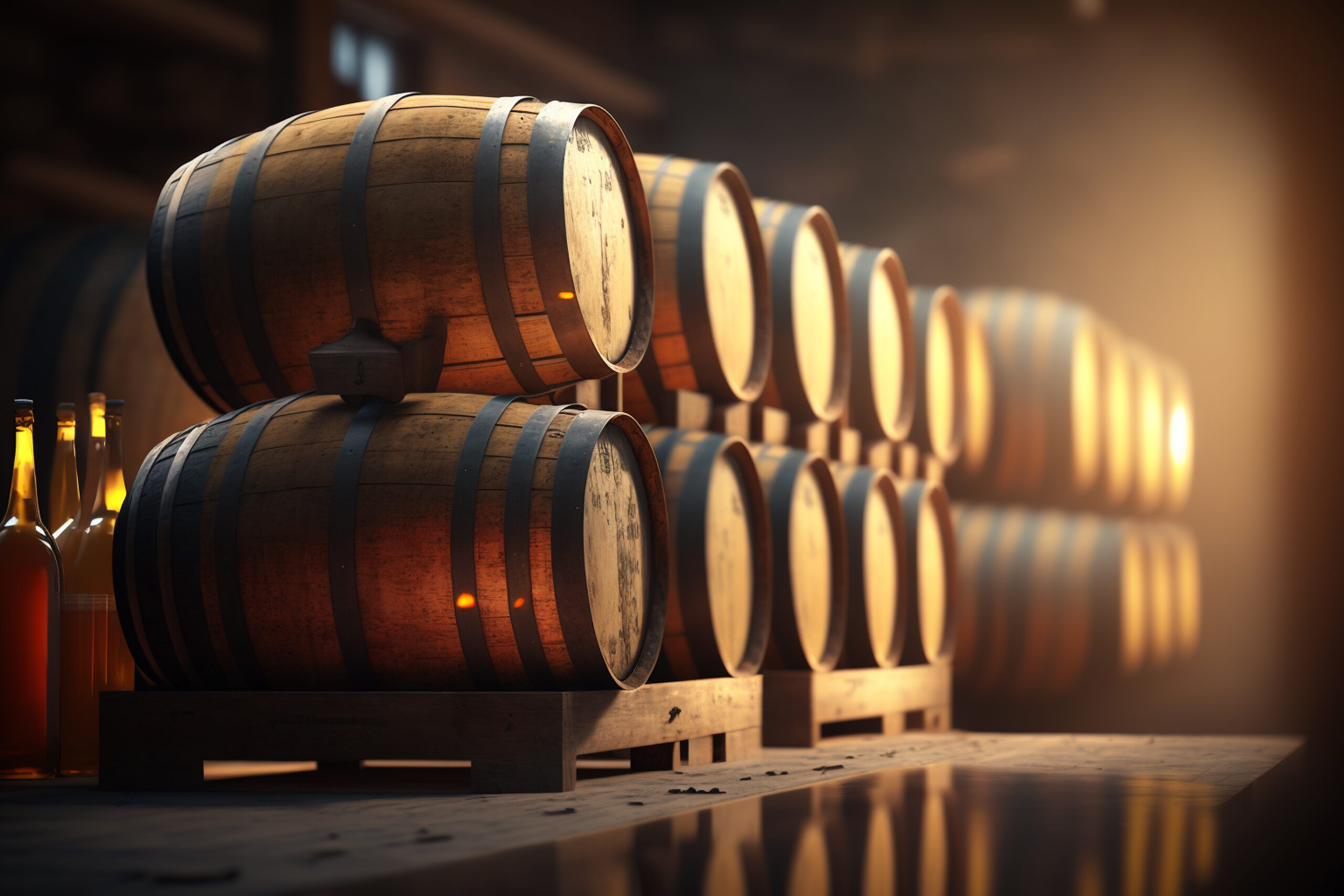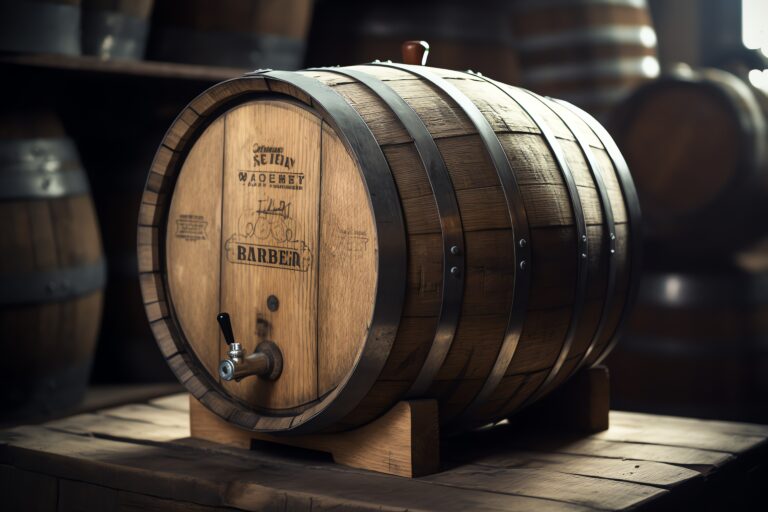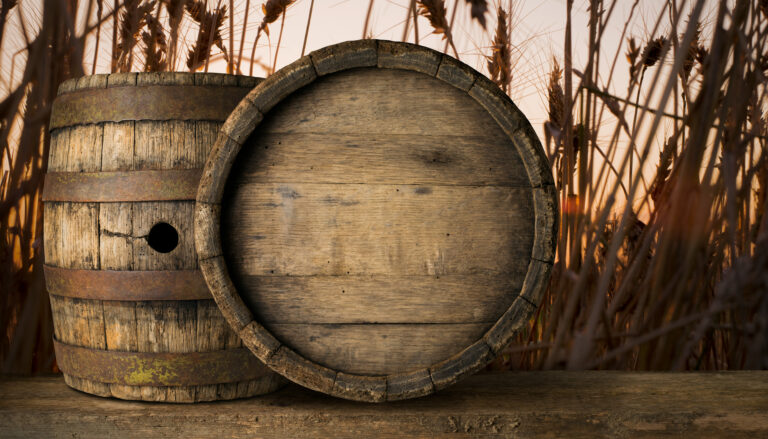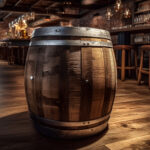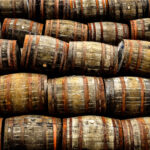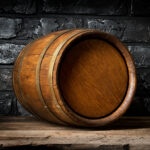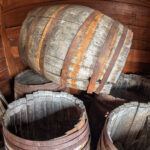You know those impressive bottles of single barrel bourbon or rye catching your eye at the local liquor store? Ever stop to think about how distilleries decide which individual barrels are special enough to be bottled all on their own? Picking out the barrels for single barrel whiskeys is a real art, demanding a sharp nose, a discerning palate, and a whole lot of patience. Master distillers and blenders personally select each barrel based on the unique character its whiskey develops over years of aging. Not just any barrel makes the cut. They’re hunting for those rare gems that show off exceptional qualities and flavors that truly stand apart.
What Exactly Is a Single Barrel Whiskey?
Well, the name pretty much gives it away – a single barrel whiskey comes from, you guessed it, a single barrel. Unlike most whiskeys that blend liquids from various casks to achieve a consistent flavor, single barrel whiskeys bottle the distinctive spirit from one individual barrel.
Distillers carefully choose specific barrels they believe will yield an extraordinary single cask whiskey. The barrel’s characteristics – think about the type of wood, the level of char, and where it’s been aging in the rickhouse – all come together to create unique aromas and tastes. Truth is, no two barrels will ever produce the exact same whiskey.
Once a barrel is selected, its entire contents are bottled. Nothing is blended in or added. You get to truly savor all the intricate flavors of that single barrel’s craft whiskey.
Each barrel has its own personality, wouldn’t you say? The whiskey’s aroma, taste, color, and finish can vary quite a bit from one barrel to the next. One might be bold and spicy, while another is mellow and fruity. There’s a real thrill in discovering how each barrel’s unique whiskey expresses itself.
When you pick up a bottle of single barrel whiskey, you’re experiencing the craftsmanship of that particular barrel. Because there are slight differences between barrels, each bottle offers a one-of-a-kind experience. No two are ever exactly the same.
For true whiskey connoisseurs, that’s a big part of the appeal. You can trace the whiskey’s journey in a way that’s just not possible with blended products. It’s like making a personal connection to that single, special barrel of premium whiskey.
Ultimately, single barrel whiskeys are a celebration of the art of whiskey making. They beautifully showcase how subtle variations in the aging process can lead to magnificent nuances. And they allow us to explore those nuances one distinctive barrel at a time.
The Crucial Barrel Aging Process for Whiskey
Selecting the right barrels? That’s both an art and a science, something master distillers have perfected over generations. As a fine whiskey ages, it draws in flavors and aromas from the barrel wood. Choosing barrels with the right char level and wood type is what gives those beloved single barrel whiskeys their signature flavors.
The first step is sourcing top-notch barrels. Distillers typically go for American white oak, which has the ideal porosity and chemical makeup for aging whiskey. The wooden staves need to be properly cured and kiln-dried.
Once the barrels are put together, they undergo charring – a brief burn over an open flame. This char layer inside the barrel acts like a filter and helps mellow the whiskey. Barrels are charred to different degrees, from a light toast to a heavy char, and this directly influences how much flavor the wood imparts.
Then, the barrels are filled with the distilled spirit and left to age in warehouses, often called rickhouses. As the whiskey matures, it expands and contracts with temperature shifts, moving in and out of the wood. This interaction, often called the “breathing” effect, allows the whiskey to absorb color and flavor compounds from the wood’s lignin, lactones, tannins, and vanillins.
Distillers regularly sample barrels during aging to see if the whiskey has reached its peak flavor. When it’s just right, these barrels are bottled as highly sought-after single barrel whiskeys.
Through careful barrel selection and aging, distillers craft whiskey with enticing aromas of vanilla, caramel, and oak, along with delightful toffee, nut, and fruit flavors. The aging and bottling of single barrel whiskeys is truly an art form, which is why each barrel offers a slightly different taste. But with the right wood and char, distillers can create a signature flavor profile that whiskey enthusiasts will appreciate for years to come.
How Distillers Handpick Barrels for Single Barrels
Distillers put a whole lot of thought into selecting the specific barrels for their single barrel whiskeys. The barrels they choose can significantly impact the final flavor and aroma. Here are some key factors they consider:
- Barrel type: Distillers have options: new charred oak barrels, used barrels that previously held other spirits (like bourbon or sherry), or even a combination. New barrels tend to impart more pronounced oak flavors, while used barrels can contribute more complex, mellow notes.
- Toast and char levels: Before filling, barrels are exposed to fire, and the intensity of this process (light, medium, or heavy toast) determines how much oak flavor is extracted. The char level, ranging from light to heavy, influences the smokiness and spice notes. Distillers select barrels with the ideal toast and char to achieve their desired flavor profile.
- Age of the barrel: As barrels are used over time, they gradually lose some of their ability to impart oak flavors and aromas. Distillers might opt for newer barrels for a robust, oak-forward whiskey or older barrels for a mellower, smokier spirit.
- Location in the rickhouse: Barrels aged in the higher, warmer parts of the rickhouse tend to experience more interaction with the oak, leading to a deeper color and more intense flavor. Barrels in lower, cooler areas mature more slowly, often resulting in lighter, fruitier whiskeys. Distillers select barrels from specific locations based on the characteristics they want to highlight.
- Uniqueness: Sometimes, distillers simply stumble upon barrels that stand out during tasting. These might have an exceptionally pleasing balance of flavors, aromas, and finish that sets them apart. These rare “honey barrels” often become the most coveted single barrel releases.
Selecting individual barrels is a true art, one that takes years of experience to master. But when it’s done right, the results can be nothing short of magical – as any fan of single barrel whiskeys can tell you! The care and craft that go into choosing each special barrel truly shine through in the complex, memorable spirits they produce.
The Meticulous Process of Tasting and Evaluating Barrels
Once barrels have aged for at least four years, the master distiller begins the crucial process of selecting single barrels for bottling. This involves a meticulous tasting and evaluation.
Sampling Barrels
First, small samples of whiskey are drawn from different parts of the barrel. This helps the distiller understand how the flavor has developed over time and how consistent it is throughout the barrel. Only barrels showing a rich, full flavor and good consistency are even considered for single barrel bottlings.
Nosing the Samples
Next, the distiller carefully noses each sample, paying close attention to the aroma. They’re looking for those inviting scents of vanilla, caramel, oak, and spice that indicate the barrel has imparted desirable notes into the whiskey. Any harsh or off aromas are a sign that the barrel isn’t quite ready and needs more time.
Tasting and Evaluating
Finally, small sips are tasted and evaluated for mouthfeel, flavor, finish, and the overall experience. Smoothness, a good balance of flavors, and a long, satisfying finish are key indicators of a barrel that’s ready to become a single barrel bottling. Barrels that don’t meet these high standards are returned to the aging warehouse for further maturation.
Selecting the Best of the Best
From the barrels that are deemed ready, the master distiller selects only the absolute best for single barrel bottling. These are the barrels that showcase exceptional aroma, taste, mouthfeel, and finish. It’s not uncommon for only a handful of barrels out of thousands to be chosen for a single barrel bottling – a true testament to the skill and care involved in this selection process.
The single barrels that make the cut are then bottled individually. Each bottle contains whiskey from one barrel that has been aged to perfection. This meticulous process is what allows your favorite single barrel whiskey to achieve a level of quality and flavor that’s truly unique.
The Delicate Art of Blending Barrels (Wait, What?)
Now, this might sound a little confusing after talking about single barrels, but sometimes the “art” involves a very small, careful selection. Once barrels have been identified as exceptional, the Master Distiller might sample them side-by-side to see if a very small batch – still representing the unique character of a few individual barrels – creates an even more compelling final product for a specific single barrel release. It’s about finding a harmonious marriage of exceptional individualities.
Choosing a Select Group of Barrels
The Master Distiller will sample whiskey from these top-tier barrels, noting their individual characteristics like sweetness, oakiness, spice, and fruit notes. They might then consider blending a very small number of barrels that complement each other to enhance the overall complexity and balance of the final single barrel offering. For instance, they might pair a barrel aged in a higher part of the rickhouse with one that matured in a cooler spot.
Fine-Tuning the Selection
This isn’t about creating a consistent flavor profile like a blended whiskey. Instead, it’s about carefully selecting a tiny group of exceptional barrels that, when bottled together (though still representing a very limited number), offer a particularly compelling and nuanced experience that still highlights the distinctiveness of the individual barrels within that small batch.
Determining the Final Expression
Once the Master Distiller is satisfied with this very limited selection, they decide how much of this small batch will be bottled as a single barrel product. Even then, each bottle within that release might still note the specific barrels included, emphasizing the individual nature of the whiskey.
The Final Touches
The final steps are the same: bottling, labeling, and distribution. Each bottle will represent the exceptional whiskey from those carefully chosen few barrels, and while there might be slight variations between different single barrel releases, each one still embodies the unique character of the individual barrels that went into it.
This nuanced approach to “blending” at the single barrel level is a testament to the distiller’s dedication to crafting the most exceptional whiskey experience possible, still honoring the individuality of each remarkable barrel.
Unique Flavors That Emerge From Different Barrels
The flavor of any whiskey is deeply influenced by the barrel it calls home during aging. For single barrel whiskeys, distillers undertake a meticulous selection process to pinpoint those barrels that will impart truly distinctive flavors to the final spirit.
Wood Type
The type of wood used for the barrel plays a significant role. By law, bourbon must be aged in new, charred American white oak barrels. These oak barrels contribute sweet notes of vanilla and coconut, along with a touch of spice. Some distillers might experiment with different wood types for unique flavor twists, such as maple, hickory, or mesquite.
Toast and Char
Barrel makers carefully toast and char the inside of each barrel to precise levels. More intense charring and toasting lead to more pronounced oak and smoky flavors in the whiskey. Lighter charring tends to produce subtler oak and spice notes. Distillers select barrels with the charring level that will best complement the flavor profile they envision for the final whiskey.
Barrel Location
Where a barrel rests within the rickhouse or warehouse also impacts its flavor development. Barrels located higher up and closer to windows experience greater temperature fluctuations, leading to faster aging and more robust flavors. Barrels on lower levels and in the center of the warehouse tend to have more stable temperatures, resulting in slower aging and lighter, more delicate flavors.
Age
The age of the barrel itself, and how long the whiskey ages within it, are also key determinants of taste. Older barrels have already imparted more oak compounds to previous spirits, so they tend to add subtler oak and vanilla notes. Younger barrels can lead to bolder oak, caramel, and spice flavors. The age of the barrel, combined with the aging time of the whiskey, creates a truly distinctive flavor profile for that single barrel.
Selecting the right barrels is absolutely crucial for producing memorable single barrel whiskeys with complex and nuanced flavors. By carefully controlling the wood type, char level, barrel placement, and age, master distillers craft whiskies that are as unique as the very barrels they mature in. So, the next time you savor a glass of single barrel whiskey, take a moment to appreciate the artistry and expertise that went into selecting that one perfect barrel.
Following the Journey of a Single Barrel From Start to Finish
Once the whiskey has reached its peak maturity in the rickhouse, the time comes to select the individual barrels that will be bottled and sold as premium single barrel whiskeys. This is a true art form, requiring an expert palate to identify only the finest examples.
Evaluating the Barrels
The distiller will sample whiskey from a range of barrels to assess which ones are ready for bottling. They consider factors like aroma, flavor, mouthfeel, and finish, seeking out barrels that beautifully showcase the distillery’s signature style. The chosen barrels must exhibit a harmonious blend of flavors, such as vanilla, caramel, and oak, along with the unique characteristics of that particular whiskey.
Choosing the Best of the Best
From the barrels deemed to be at their peak, only a select few are considered exceptional enough to be released as single barrel whiskeys. These prized “honey barrels” represent the pinnacle of quality, displaying an impeccable balance of aromas, flavors, and finish that come together to create an unforgettable whiskey drinking experience. When everything aligns perfectly, these single barrel whiskeys become the ultimate expression of the distiller’s art.
Following Your Barrel’s Journey
Once a barrel is selected, your single barrel whiskey begins its final journey to you, the fortunate customer who will get to enjoy its contents. The barrel is emptied, and the whiskey is bottled at barrel proof or adjusted to a specific bottling strength. Each bottle is then labeled and packaged. Because each bottle comes from a single, hand-selected barrel, no two single barrel whiskeys will ever be exactly alike. From the initial distilling and aging to the final evaluation, selection, and bottling, a multitude of factors contribute to each single barrel whiskey’s distinctive flavor and aroma profile. When you purchase a bottle, you have the opportunity to follow the journey of that one-of-a-kind barrel and savor the results of years of dedication to crafting an exceptional whiskey.
Savoring a glass of single barrel whiskey is like experiencing the hard work, passion, and creativity of the distiller in liquid form. Each sip reflects the care and expertise that went into crafting a whiskey that stands alone as a testament to the art of distillation.
How Many Barrels Ultimately Make the Final Cut?
When it comes to selecting barrels for a single barrel whiskey release, distillers carefully evaluate numerous factors to determine which ones are truly exceptional. Out of the thousands of barrels aging on site, only a small fraction are chosen as the best of the best.
Location Within the Warehouse
The specific location of a barrel within the warehouse can significantly influence how quickly it ages and develops flavor. Barrels stored in higher, warmer areas tend to age faster, while those on lower, cooler floors mature more slowly. Distillers often select barrels from various locations within the warehouse to achieve a well-rounded balance of flavors in their final single barrel offerings.
The Barrel’s “Sweet Spot”
As whiskey ages, it progresses into and out of its so-called “sweet spot” – that perfect period where it has achieved an ideal balance and depth of flavor. Distillers diligently sample barrels to identify those that have reached their prime and are ready for bottling. Barrels that haven’t aged sufficiently or have aged for too long are typically passed over.
Uniqueness of Flavor
During the tasting process, distillers are on the lookout for something special, something that makes a barrel stand out. This could be unique hints of dried fruit, rich caramel notes, or a distinctive spice character. The most distinctive and complex barrels are the prime candidates for a single barrel release. Sometimes, small groups of barrels with similar, beautifully balanced flavor profiles might be selected to create a cohesive, yet still individualistic, product line.
The Final Number
In the end, the number of barrels chosen for a single barrel whiskey release can vary, ranging from just a few to perhaps thirty or more, depending on the distillery and the specific release. These carefully selected barrels are then bottled individually, with each bottle often noting details such as the barrel number, aging location, and even specific flavor notes. This allows consumers to truly appreciate the nuances of each barrel’s unique aging journey.
The meticulous selection of barrels by experienced distillers is paramount to achieving a premium single barrel whiskey that offers an unparalleled taste of the distillery’s craft. By consistently sampling and choosing only the finest few barrels from the thousands aging on-site, the true character and individuality of the whiskey are allowed to shine through in every single bottle.
The Process Behind Your Favorite Single Barrel Whiskeys: Your Questions Answered
The process of selecting barrels for single barrel whiskeys is truly an art form. Master distillers meticulously taste and evaluate each barrel to find those perfect few that beautifully showcase the distillery’s distinctive style.
Choosing the Initial Barrels
The first step involves selecting barrels that were used to age either bourbon or rye whiskey. Barrels that previously held wine or sherry are typically not used for single barrel bottlings. Distillers will sample barrels from different warehouse locations and floors to account for the temperature variations that can influence the aging process. They are looking for barrels that demonstrate good complexity, depth of flavor, and overall balance.
The Rigorous Tasting Process
A small sample is drawn from each barrel under consideration for evaluation. Distillers carefully nose the samples, looking for inviting aromas of vanilla, caramel, and spice, as well as tasting for notes of dried fruit, nuts, or chocolate. They also consider the barrel’s age to determine if it has reached its optimal maturity. If a barrel needs more time to develop its full flavor profile, it will be returned to the aging warehouse for further maturation.
Selecting the Very Best
From the initial group of promising barrels, distillers will select only a handful of the very best. Another round of tasting is conducted to determine which barrels truly rise above the rest. They are looking for distinct and appealing flavors, a long and satisfying finish, and an overall experience that perfectly captures the essence of that particular whiskey. Ultimately, only one or two barrels might be chosen to become a new single barrel bottling.
The Bottling of the Single Barrels
Once a barrel is selected, its contents are emptied and bottled individually, with no blending of whiskey from other barrels. Each bottle comes from a single, unique barrel, which is why there can be subtle flavor differences between different single barrel releases. The barrel number, and often its specific warehouse location, are typically noted on the label, providing transparency into its origin.
The care and craftsmanship that go into choosing single barrel whiskeys result in a truly exceptional drinking experience. Each sip offers a taste of history from a one-of-a-kind barrel. While no two are exactly alike, they all embody the passion and expertise of the distiller who carefully selected it. That’s the artistry behind your favorite single barrel.
Final Thoughts
So, there you have it – a peek behind the curtain at the art and science involved in selecting barrels for your beloved single barrel whiskeys. As you can see, it’s far more than just grabbing any old barrel. It’s a meticulous process with a multitude of factors that master distillers consider to find that perfect match for a distinctive flavor profile. The next time you pour yourself a glass of your preferred single barrel, take a moment to appreciate the care and craftsmanship that went into choosing that one very special barrel just for bottling. Discovering the ideal barrel is truly an art form and a labor of love for the master distillers and blenders who are dedicated to bringing you the very best single barrel bourbon, single barrel rye, and other exceptional single cask spirits. Cheers to the unique journey of every single barrel!
